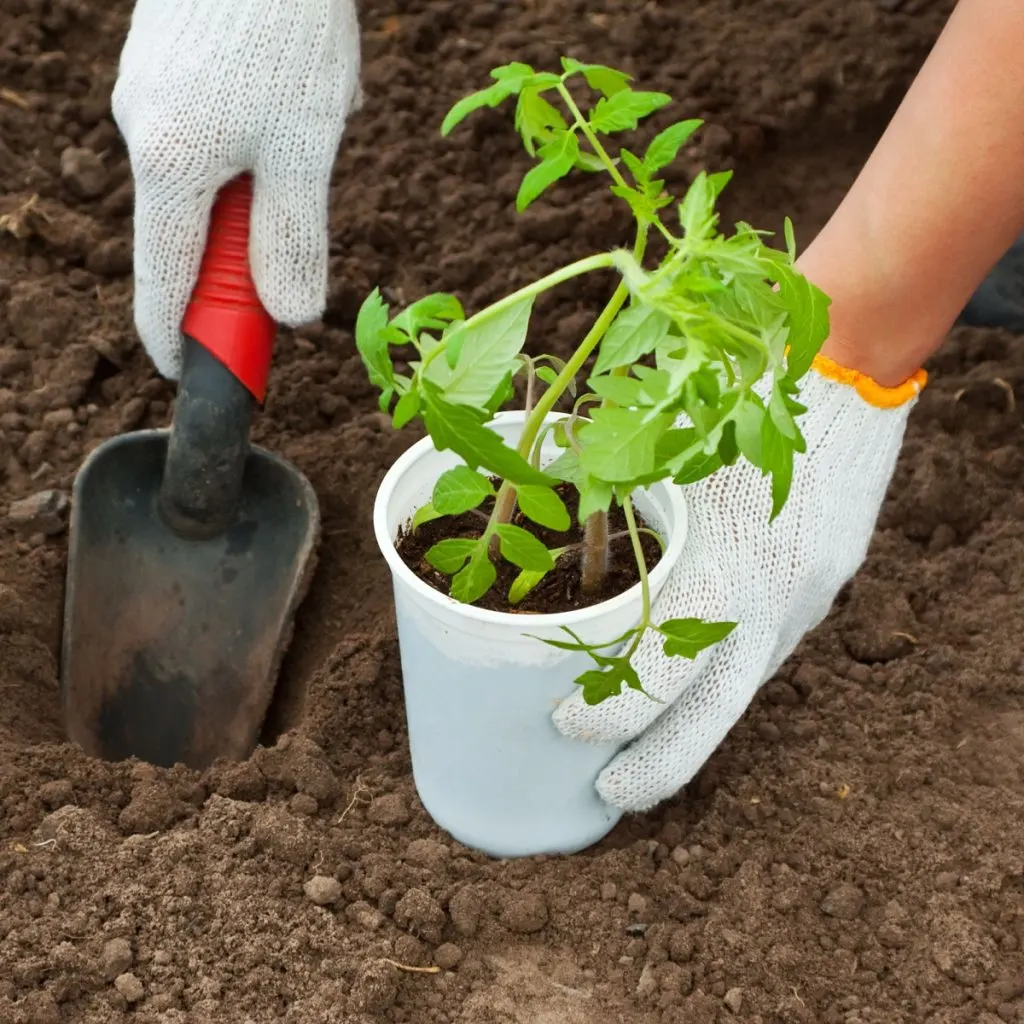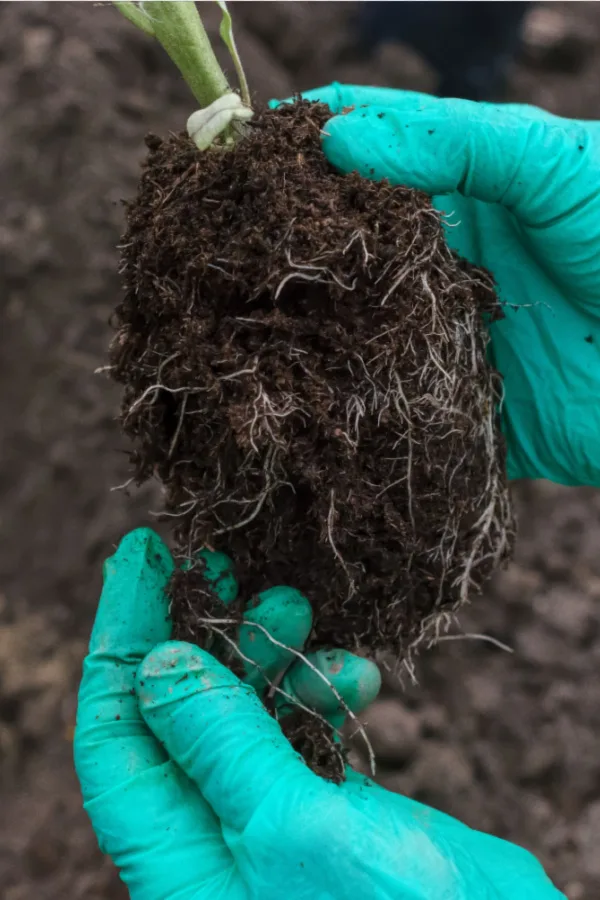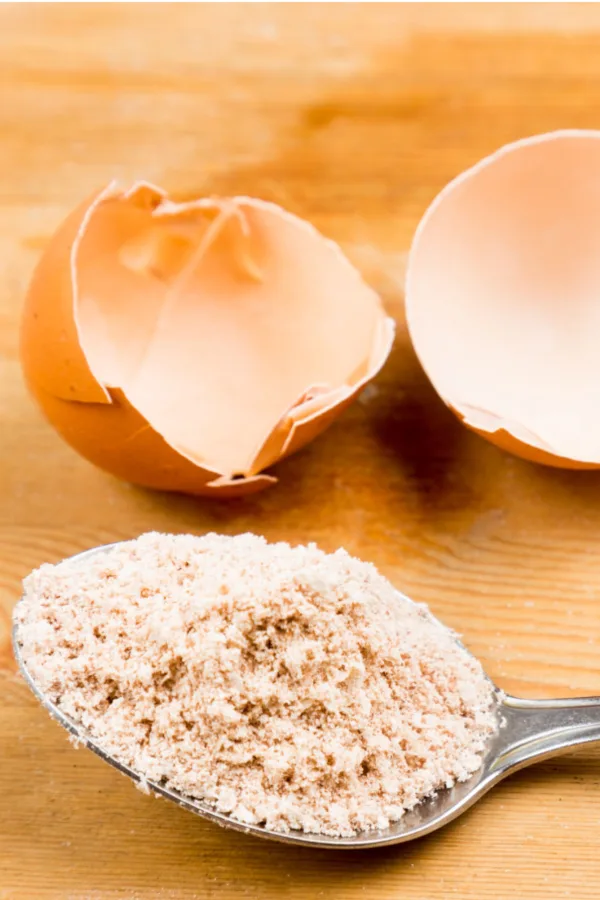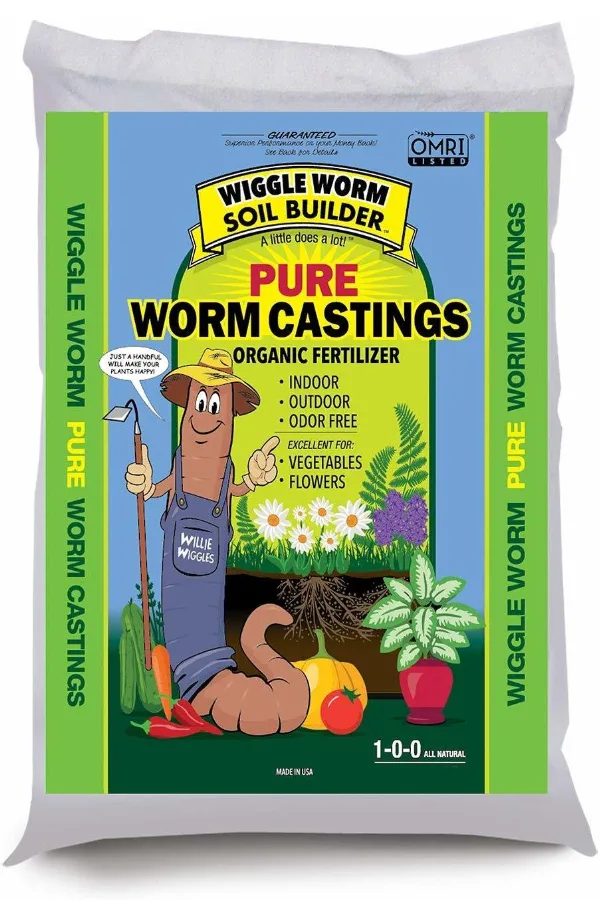Did you know that what you put in a tomato planting hole when you plant can make a huge difference in how quickly your plant grows – and how well it produces this year?
Getting your tomato plants off to a great start is one of the biggest keys to growing a big harvest of juicy tomatoes in the summer – and there is no better way to jump start your crop than putting a big dose of power in your tomato planting hole with four simple but powerful ingredients!
Tomato plants are one of the heaviest feeders of all vegetable plants. They need a lot of nutrients. Not only to produce delicious tomatoes, but to power all-important early growth. And strong, early growth is the key to setting the stage for a bumper crop of tomatoes.

What To Put In A Tomato Planting Hole
Setting The Stage For Big Root Growth
The roots of a tomato plant are extremely important to its overall success. The bigger and more robust a tomato plant’s root system can grow, the more it can easily and readily absorb the nutrients and moisture it needs to grow and produce.
So how do you get the roots of your tomato plant to grow big and strong? It all begins, of course, with planting healthy transplants. But from there, it all comes down to making sure you are planting your tomatoes in the finest soil possible – and not just right into ordinary garden soil.
Tomatoes grow best in fertile, well-draining soil. And that soil need to be loose enough to allow for strong, fast root growth. But because tomatoes require such a large supply of nutrients, even the richest soil can use a boost. Especially at planting time!
Avoiding Transplant Shock
When tomato transplants first go in the ground, they go through a bit of shock. Up until that point, they have been protected, growing indoors or under cover for most of their life. Even more, the roots have been growing in fertile, seed starting soil that is rich and loose.
Now they find themselves in a big planting hole outdoors. And it takes the roots time to learn to expand to find more food and moisture. This time period is absolutely critical for the plant’s short and long term success.

If they can’t quickly find the nutrients they need, or if the soil around them is hard and tough to grow through, it will stall and delay early growth. But if they can easily find an overload of nutrients, and have loose, easy-to grow through soil, they will quickly take off and begin to expand rapidly.
The less transplant shock a tomato plant can have the better. And the quicker the root system grows, the more rapidly it will gain the nutrients it needs to power even more growth and strong bloom sets. That is exactly why it is so important to stack the deck in your favor by filling your planting hole with pure power. And to do that – all it takes is adding 4 simple ingredients into every single hole!
1. Why You Need To Put Compost In Every Tomato Planting Hole
Compost is a must-add to every single tomato planting hole. It is full of energy and nutrients. Even better, its nutrients are in a form that are easy for the roots of tomato plants to absorb. That means they can get the food they need right from the start!
The benefits of compost do not end there. Compost can absorb water and hold moisture nearly ten times more than plain soil. For tomato plants, that means they can have the moisture they need to grow foliage, blooms and fruit. Affiliate Product Link: Charlies Bagged Compost
Finally, compost helps to loosen the soil with its light and airy makeup. Loose soil allows the roots to expand easily and without issue. Remember, the more root structure a plant can have below, the more it will feed the plant above!
Listen In Below On Our Podcast On How To Fertilize Tomato Plants All Summer For A Big Harvest!
How much compost should go into each planting hole? At minimum, mix at least two to three cups of compost into each hole. And for an added benefit, put a few more cups around the base of your plant after planting. Those nutrients will leach down to the roots every time it rains or you water.
2. The Power Of Worm Castings In A Tomato Planting Hole
Worm castings are a must for tomato planting holes! They are perhaps natures finest slow and low release fertilizer. Castings are the manure of earthworms. As they chew through the soil, earthworms leave behind castings, which are loaded with a perfect mix of energy. Even better, it’s easy for plants to absorb.
For the roots of tomatoes, the castings provide instant energy. But what makes them so special is that the energy is delivered low and slow to keep the plant growing at the perfect rate – not too slow, and not too fast.
In each planting hole, mix in a quarter to a half-cup of worm castings for best results. This is actually a great practice for all of your vegetable plants. Once you use worm castings and see the results, you won’t ever stop using them! Affiliate Product Link : Pure Worm Castings
3. Egg Shell Powder
Another big ingredient that is at the top of the list to put in your tomato planting hole are egg shells. Or more importantly, pulverized egg shells. See our article: The Best Way To Use Egg Shells In Your Garden.
One of the most important nutrients tomato plants need is calcium. Early on, it helps the plant build strong stems and roots. But more importantly, calcium is critical for helping tomato fruit to form without issue.
Tomato blossom (black end) rot is caused when the plant cannot take in enough calcium. Without enough, the blossom end of the tomato turns soft and dark. If bad enough, blossom end rot can ruin an entire crop of tomatoes.
The good news is that egg shells happen to be full of calcium. In fact, an egg shells makeup consists of nearly 95% calcium carbonate. By putting pulverized egg shells in your planting hole, the calcium within them can then be absorbed into your plants.
Why pulverized? The more your can break down the egg shells, the sooner they can decompose and allow their calcium to be absorbed. Large pieces of egg shells will eventually decompose, but not quickly. By pulverizing the shells down to a near powder, it will speed up the process and the absorption rate.

To be effective, use the egg shells from four to six eggs in each planting hole, or about two tablespoons of egg shell powder. If you happen to have a small electric coffee grinder – it makes fast work of grinding up the shells! Affiliate Link: BLACK+DECKER One Touch Coffee Grinder
Coffee Grounds – 4 Secret Ingredients To Put In Your Tomato Planting Hole!
Finally, while you are mixing all of that goodness into your planting hole, don’t forget spent coffee grounds. Yes, as it turns out, just like many humans, tomato plants enjoy a little jolt of energy from coffee grounds too!
Coffee grounds contain nitrogen and other trace elements. Nitrogen is a key factor for tomato plants when it comes to growing strong foliage and roots. But even more, like compost and worm castings, spent coffee grounds help to retain moisture and loosen the soil makeup.
Mix two to three tablespoons of spent coffee grounds into each planting hole. It’s important to use only the spent grounds and not fresh grounds. Fresh grounds are acidic and can affect the soil’s pH. Spent grounds, because they are run through a steaming hot water rinse, lose the acidity and are perfect for powering your plants. Once your tomato plants get planted and it’s time to give them a little boost, be sure to check out our article Fertilizing Young Tomatoes – 3 Simple Tips To Power Up Your Newly Planted Tomatoes Fast!
Here is to knowing what to put in your tomato planting hole this year – and to growing your best crop of tomato plants ever!
This Is My Garden
Follow Our Facebook Page For Great Gardening Tips And Advice! This Is My Garden Facebook Page
This Is My Garden is a garden website created by gardeners, for gardeners. Jim and Mary Competti have been writing gardening, DIY and recipe articles and books and speaking for over 15 years from their 46 acre Ohio farm. They publish three articles every week, 52 weeks a year. Sign up today to follow via email, or follow along!

